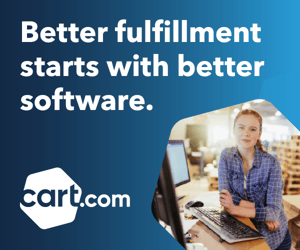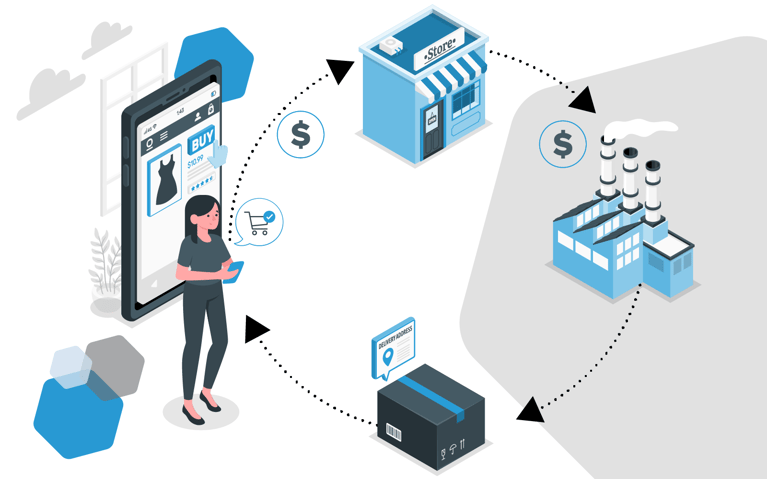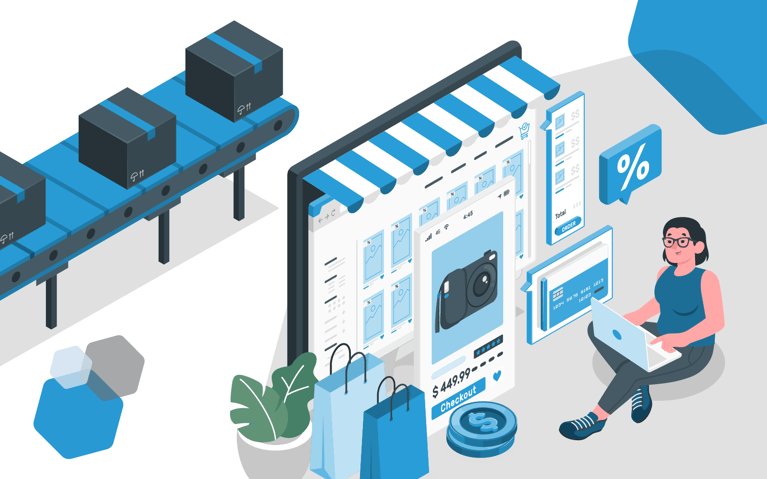Finding one fulfillment solution that caters to all of your business’s needs is not an easy task, especially if you’re operating across multiple sales channels. Every fulfillment model, whether that’s in-house fulfillment, dropshipping or even 3PL fulfillment, has its own mix of pros and cons that brands need to consider before committing. But what if you didn’t need to commit to just one method of fulfillment?
With hybrid order fulfillment, you can get the best out of every channel you choose and ensure reliability as you scale. Let’s explore how hybrid order fulfillment works and how you can use it to grow your business:
What is hybrid order fulfillment?
Hybrid order fulfillment is when an ecommerce merchant combines multiple order fulfillment models into one strategy to fulfill orders faster, meet customer demand or lower fulfillment costs. A hybrid fulfillment strategy enables businesses to leverage the strengths of different fulfillment methods and reduce the inefficiencies that can be found in standalone fulfillment models. However, this approach creates a much more demanding fulfillment strategy, requiring real-time visibility and management of numerous sales channels and fulfillment locations.
Methods of order fulfillment
There are numerous fulfillment methods that ecommerce brands can combine to pioneer a hybrid order fulfillment strategy. These include:
In-house fulfillment
In-house fulfillment or self-fulfillment requires ecommerce businesses to manage the end-to-end fulfillment process independently. This includes order processing, picking and packing, shipping and returns management. One advantage of in-house fulfillment is that brands have full control over each stage of the process, so they can make creative decisions about brand experience and implement them as needed. However, it’s difficult to scale effectively and requires escalating levels of infrastructure and labor investment.
Store-based fulfillment
Suppose a brand operates brick and mortar locations in addition to an ecommerce channel. In that case, they can repurpose these storefronts and inventory allocations to fulfill orders placed online, either for home delivery or BOPIS (Buy Online, Pick Up In-Store). This helps reduce shipping costs and delivery timeframes for customer orders within a close radius of the storefront.
Dropshipping
Dropshipping is a way for ecommerce brands to sell inventory they don’t own or store themselves. Instead, items listed on their online store will be routed to a third-party supplier who holds the stock and is responsible for fulfilling and shipping that order to the customer. This is a great way to increase product assortments while keeping storage and inventory carrying costs down. However, it’s important to note that product quality can be variable. And if there’s a problem with a customer order, it’s your responsibility to fix it.
Fulfilled by Amazon
Fulfilled by Amazon (FBA) is a storage and fulfillment service offered by Amazon to ecommerce businesses listing products on the platform. In exchange for a per-product fee, brands can store their inventory within Amazon warehouses. When orders are placed, Amazon carries out the picking, packing, and shipping of orders to the end customer. While FBA makes it easy for businesses to achieve those coveted two-day delivery timeframes, it does require strict compliance with a long list of storage requirements.
Third-party fulfillment
When outsourcing fulfillment to a third-party logistics (3PL) provider, an ecommerce brand partners with an external company to carry out all fulfillment-related tasks on their behalf, including inventory storage, order processing, order fulfillment, shipping, returns, technology integrations and more. 3PL fulfillment is a sizable investment, especially for smaller ecommerce businesses. However, taking on this entire workflow frees up time and resources for merchants to focus on other aspects of their operation that promote growth.
The benefits of hybrid order fulfillment
Hybrid order fulfillment combines elements of both centralized and decentralized fulfillment strategies, offering retailers a flexible approach to meet diverse customer needs. By leveraging multiple ecommerce fulfillment methods retailers can optimize inventory management, reduce shipping costs and improve order processing efficiency. This model allows retailers to fulfill orders from the location that offers the fastest and most cost-effective delivery, enhancing customer satisfaction and loyalty. Here are the benefits explained:
Choose the fastest/cheapest method for every order
The increased flexibility offered by hybrid order fulfillment means that ecommerce brands can choose order fulfillment workflows based on the characteristics of each order. For example, if a customer placing an order via your online store is only 5 miles away from a physical storefront, it’s much cheaper and faster for the store to fulfill and ship that order, instead of your warehouse. Routing your orders this way enables your business to save significant sums with each other, which can be reinvested elsewhere in your business.
Test out new channels/products
With multiple fulfillment channels, ecommerce brands can test new products or strategies with much less risk. This makes it possible to gather valuable data on customer preferences, product performance and seasonal demand before making sizeable investments. Listing a few high-performing products on marketplaces like Amazon, for example, helps to grow a brand’s reach and test market demand.
Reduce inventory carrying costs
The cost of storing inventory is one of the biggest running costs for ecommerce brands. Warehouse space is in high demand and doesn’t come cheap, which can stifle growth opportunities. Leveraging fulfillment strategies like dropshipping allows merchants to keep pace with market trends and keep evolving their product assortment, but without having to boost their storage capabilities in tandem.
Hybrid order fulfillment best practices
To create a hybrid order fulfillment strategy, put these best practices into play:
- Route orders effectively: Intelligent order routing is vital to reap the benefits of having multiple fulfillment channels at your disposal. Your order management system (OMS) should consider factors such as delivery destination, inventory availability, time to ship and delivery costs, as well as the current levels of demand in each channel. Otherwise, you can easily end up with bottlenecks developing in certain fulfillment locations, while others are being underutilized. When done right, order routing ensures that the right order is sent to the right location at the right time, making hybrid fulfillment more efficient.
- Centralize inventory management: When using multi-node fulfillment network to make hybrid strategies more effective, a unified view of inventory levels and availability at each of your fulfillment locations ensures that your business prevents overselling and stockouts, which lead to customer dissatisfaction and delays in fulfillment. This includes storefronts as well as warehouses, which often take the brunt of fulfillment during busy times of year.
- Understand customer preferences and cater to them: Knowing what drives purchases and shopper satisfaction is key to creating a hybrid order fulfillment strategy that’s centered on your customers. This doesn’t just mean demand forecasting or shopping behaviors, but what fulfillment methods they prefer. Do they like picking up online orders in-store? If so, might in-store returns also be an appealing option? Would faster delivery methods help to drive sales, or would free shipping be a better bet? Dive into your data and find out.
- Seamless integrations: All of your business systems need to be working in lockstep to share data in real time and avoid errors or duplications that slow down order processing and fulfillment. This includes your ecommerce platform, point-of-sale (POS) warehouse management system (WMS) and any proprietary systems that your 3PL may be using. Automating the push of order data to the next step of the fulfillment process saves precious time and labor so orders can get out the door faster.
Implementing hybrid order fulfillment
Hybrid order fulfillment enables retailers to have their cake and eat it to. Want to add more products to your online store? Find a reliable dropshipping supplier who can seamlessly fulfill orders on your behalf. Want control over the brand experience, but struggling to handle growing order volumes? Partner with a 3PL who can equip you with scalability while also creating the customer experience that brings shoppers back to your brand–time and time again.
Cart.com is a trusted fulfillment provider that delivers seamless order fulfillment services to leading brands in the retail space. Contact our team today to find out how we can deliver orders to every channel and every destination.
Subscribe to our emails for the latest industry insights!
By entering your email, you agree to receive marketing emails from Cart.com








